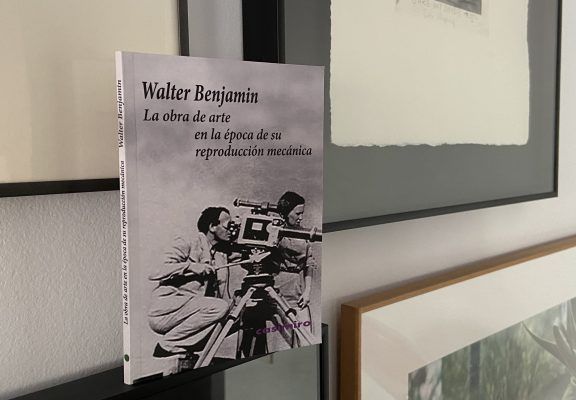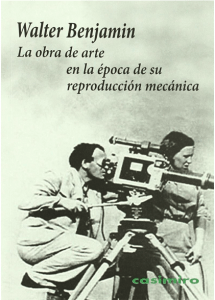

Ex Libris
The Work of Art in the Age of Mechanical Reproduction, by Walter Benjamin
06/14/2021|
5 mins
An essential book to learn how to look at and see what surrounds us

| No. of pages: | 62 |
| Publisher: | Casimiro |
| Language/Original Language: | Spanish/German |
| ISBN(Spanish edition): | 9788493837525 |
| Year of publication: | 2019 |
| Year of original publication: | 1935 |
| Place of publication: | Madrid |
| Where to buy: | Casa del Libro |
In two sentences:
"For the first time in the process of pictorial reproduction, photography freed the hand of the most important artistic functions which henceforth devolved only upon the eye looking into a lens. Since the eye perceives more swiftly than the hand can draw, the process of pictorial reproduction was accelerated so enormously that it could keep pace with speech." “Just as water, gas, and electricity are brought into our houses from far off to satisfy our needs in response to a minimal effort, so we shall be supplied with visual or auditory images, which will appear and disappear at a simple movement of the hand, hardly more than a sign.” [The words of Paul Valéry (1930), quoted by Benjamin in his text]
In 300 characters:
A delicious, concise, synthetic text that leads us through the reality, use and “purpose” of art at the end of the modern era and the beginning of the contemporary period.
Written in 1935, the book introduces concepts that are today the basis of the discipline of aesthetics and image analysis: aura, technical reproduction, tradition and halo.
Why I should read it:
- This text predicts the way we face the images that surround us and the use we make of them. The influence of the book is immense and it should be compulsory reading for marketing and communication professionals.
- Despite being written in 1935, or perhaps precisely for that reason, the book is completely contemporary. When it talks about the way we relate to painting, music, cinema or literature, it really seems to be describing the present moment.
- The text has very few pages but we recommend you to read it slowly and thoughtfully. In a single sentence, there may be up to five different points of inspiration that we can apply. The text becomes more complicated as it progresses, but that should not put us off.
- It is important to read the footnotes, especially in sections iv and v of the book. In one of them we find a comparative analysis of the need for different disciplines to be “seen” by the largest number of people possible to justify their existence. That phrase could perfectly well be the starting point for a discussion of innovation in any consumer brand.
- The text does not require previous knowledge of philosophy, aesthetics or the history of art to be understood, although it may well make us want to acquire such knowledge to enjoy it even more.
If you like this text, you might also like:
In Praise of Shadows by Jun’ichiro Tanizaki
The Catch by The Hunter
This article comes from The Catch, The Hunter's strategic inspiration tank. Register with The Catch to access and receive all its content.
Subscribe now
I'm interested in for my brand
If you would like to know how 15 years of research and mapping enable us to make strategic recommendations that are innovative and relevant, write to us and we'll get In touch for a chat.
Tell me more